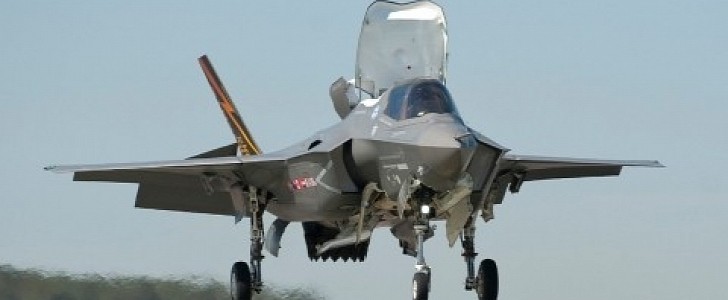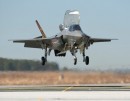The fifth-generation F-35B fighter is a multi-role machine designed to operate from short-field austere bases and a range of aircraft carriers thanks to its short take-off and vertical landing capability. Recently, the U.S. Navy has verified a process that promises to strengthen the frame of F-35B fighters, making them more durable and reliable.
The process, called laser shock peening, uses high-energy laser beams to strengthen aircraft components. The treatment doesn't add any extra material or weight, which would otherwise affect the jets by limiting their capabilities. Ultimately, the procedure helps increase the jets' lifespan and reduce maintenance costs.
The verification of the laser shock peening treatment was completed by the Navy's Fleet Readiness Center East (FRCE) aviation repair and maintenance facility. The FRCE checked the quality control through a combination of inspection, analysis, demonstration, and testing. According to the Navy, the entire verification procedure took about 15,000 labor hours in total. However, the outcome is better, more capable F-35B fighters.
"The laser shock peening modification is essential to extending the life of the F-35B STOVL variant, and the ability to complete this procedure successfully allows FRC East to support this critical workload," said FRCE Commanding Officer Col. Thomas A. Atkinson.
In July 2019, FRCE finished construction of a $6 million laser shock peening facility, and the following year, the first F-35 began the treatment. With the completion of the verification process, FRCE became the world's first facility capable of performing laser shock peening on an F-35. In the future, the Navy plans to open a second such center, which will be in Utah.
Since 2013, FRCE has been the main facility to do upgrades and repairs on the F-35B Lightning II. However, the short takeoff-vertical landing variant of the aircraft is not the only one to land at the center. The F-35A designed to take off from conventional runways and the F-35C built for carrier operations have been tested there as well.
The verification of the laser shock peening treatment was completed by the Navy's Fleet Readiness Center East (FRCE) aviation repair and maintenance facility. The FRCE checked the quality control through a combination of inspection, analysis, demonstration, and testing. According to the Navy, the entire verification procedure took about 15,000 labor hours in total. However, the outcome is better, more capable F-35B fighters.
"The laser shock peening modification is essential to extending the life of the F-35B STOVL variant, and the ability to complete this procedure successfully allows FRC East to support this critical workload," said FRCE Commanding Officer Col. Thomas A. Atkinson.
In July 2019, FRCE finished construction of a $6 million laser shock peening facility, and the following year, the first F-35 began the treatment. With the completion of the verification process, FRCE became the world's first facility capable of performing laser shock peening on an F-35. In the future, the Navy plans to open a second such center, which will be in Utah.
Since 2013, FRCE has been the main facility to do upgrades and repairs on the F-35B Lightning II. However, the short takeoff-vertical landing variant of the aircraft is not the only one to land at the center. The F-35A designed to take off from conventional runways and the F-35C built for carrier operations have been tested there as well.






